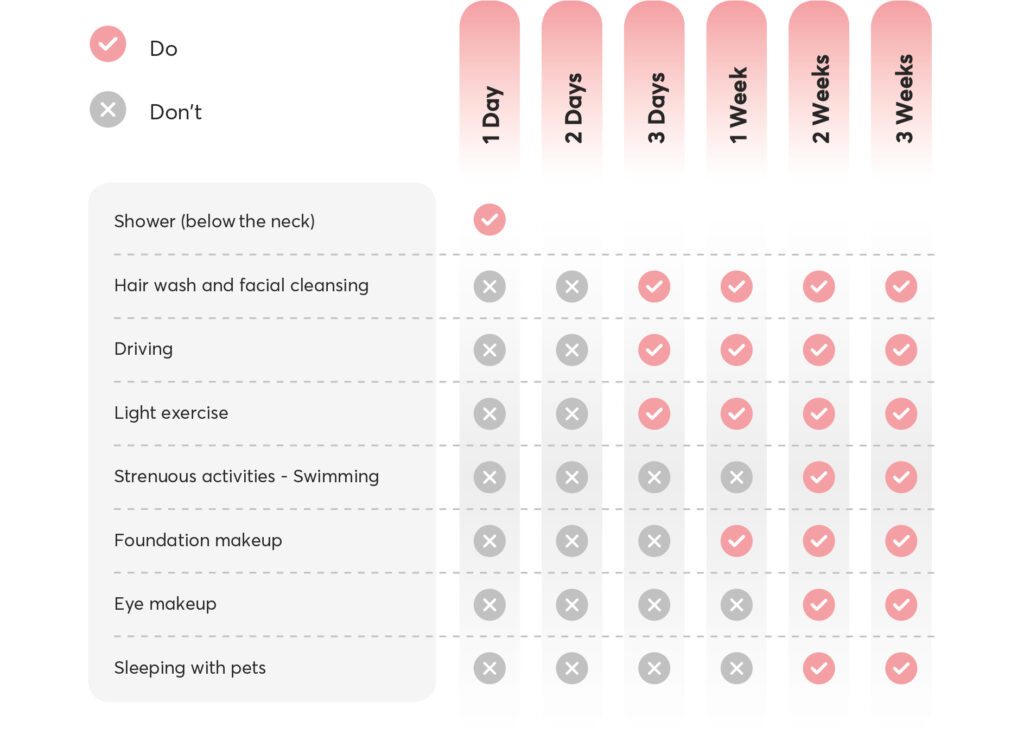
Prima Medical Center Saigon, Cataract
Understanding Cataracts and Cataract Surgery
4 February, 2024
A cataract indicates the presence of a cloudy area in the lens of the eye, which typically occurs as a natural part of aging. Initially, cataracts may not cause noticeable symptoms, but over time, they can result in blurred vision, decreased color perception, and difficulty with daily activities such as reading.

Dr An Trinh, Head of Cataract Surgery @ Prima Saigon, is consulting a cataract patient
Types of Cataracts
Cataracts can be classified into different types based on their location within the eye or the underlying cause. The main types of cataracts include:
Age-related cataracts
Age-related cataracts are a common type of cataracts that develop gradually with age. They are primarily associated with the natural aging process of the eye and result from the breakdown and clouding of the proteins in the lens. Age-related cataracts are one of the most prevalent forms of cataracts among older adults.
Nuclear Cataracts
These cataracts form in the center (nucleus) of the lens and are associated with aging. They cause a gradual yellowing or browning of the lens, resulting in vision impairment.
Cortical Cataracts
Cortical cataracts develop in the outer edges of the lens and progress inward. They appear as wedge-shaped opacities and can cause difficulties with contrast sensitivity and glare.
Subcapsular Cataracts
Subcapsular cataracts occur at the back of the lens, just beneath the lens capsule. They progress faster than other types and can cause significant vision disturbances, especially in bright light. Subcapsular cataracts are commonly seen in individuals with diabetes or those taking high doses of corticosteroids.
Congenital Cataracts
These cataracts are present at birth or develop during childhood. They can be caused by genetic factors, intrauterine infections, or metabolic disorders. Early detection and treatment are crucial for preventing visual impairment or developmental issues.

Prima Saigon: Cataract Surgery Care
Traumatic Cataracts
Traumatic cataracts result from an eye injury, such as a blow to the eye. The impact can cause clouding or damage to the lens, leading to vision problems. Immediate medical attention is necessary in such cases.
Consulting an eye care professional is essential for a proper diagnosis and personalized treatment plan if you suspect you have cataracts or any vision-related concerns.
Signs and Symptoms
Common signs and symptoms of cataracts include:
- cloudy or blurred vision, difficulty seeing at night
- sensitivity to light and glare
- the need for brighter lighting
- seeing halos around lights
- frequent changes in prescription
- faded or yellowed colors
- and double vision in one eye
Initially, the impact on vision may be minimal, but as cataracts progress, symptoms become more pronounced.
When to Seek Medical Attention
If you notice any changes in your vision, it is crucial to schedule an eye exam. Additionally, if you experience sudden vision changes, such as double vision, flashes of light, eye pain, or headaches, it is recommended to seek immediate medical attention.
Causes of Cataracts
The primary cause of cataracts is the natural aging process, resulting in the breakdown of proteins in the lens. However, other factors such as family history, certain medical conditions like diabetes, smoking, eye injuries or surgeries, exposure to sunlight without proper eye protection, and the use of specific medications like corticosteroids can also contribute to cataract development.
Protecting Your Eyes from Cataracts
Several steps can be taken to reduce the risk of early cataracts or slow the progression of age related cataract:
- Shield your eyes from the sun by wearing sunglasses and a hat with a brim.
- Take precautions to avoid eye injuries by wearing protective eyewear during activities that pose a risk.
- Quit smoking.
Make healthy dietary choices, focusing on fruits, vegetables, leafy greens, nuts, and whole grains.
Regularly undergo comprehensive eye examinations to detect and address cataracts and other eye conditions at an early stage.
Treatment for Cataracts:
Cataract surgery is the only treatment for cataracts
Fortunately, cataract surgery offers a safe and effective solution for those suffering from cataracts. This procedure involves removing the clouded natural lens of the eye and replacing it with an artificial intraocular lens (IOL). Cataract surgery is one of the most common and successful surgical procedures performed worldwide, with millions of surgeries carried out each year.
Cataract surgery is recommended when cataracts significantly affect a person’s vision, leading to reduced quality of life and interfering with daily activities such as reading, driving, or recognizing faces. The decision to undergo cataract surgery is made collaboratively between the patient and their ophthalmologist, considering the severity of cataracts, the patient’s visual needs, and overall eye health.
We exclusively utilize cutting-edge surgical equipment and materials from Europe and the USA,
guaranteeing the highest quality outcomes.
The Cataract Surgery Procedure
Cataract surgery is typically an outpatient procedure that involves the following steps:
Pre-operative Evaluation – Before the surgery, a comprehensive eye examination is conducted to measure the eye’s dimensions, determine the appropriate power of the intraocular lens (IOL), and assess the overall health of the eyes.
- Anesthesia – Local anesthesia is administered via eye drops or injection to numb the eye and ensure the patient’s comfort throughout the procedure. General anesthesia is rarely used in cataract surgery.
- Lens Removal – In a procedure called phacoemulsification, the surgeon creates a small incision in the cornea and uses an ultrasonic device to break up the clouded lens into tiny fragments. These fragments are then gently removed from the eye.
- Intraocular Lens Implantation – Once the natural lens is removed, the artificial intraocular lens (IOL) is inserted through the same small incision. The IOL remains in the eye permanently and acts as a replacement for the natural lens.
Wound Closure – In most cases, the incision is self-sealing and does not require sutures. The small size of the incision promotes faster healing and reduces the risk of complications.
What To Expect After Cataract Surgery
Types of Intraocular Lenses (IOLs) Used in Cataract Surgery
Cataract surgery involves the removal of the clouded natural lens of the eye, which has become opaque due to cataract formation, and its replacement with an artificial intraocular lens (IOL). There are several types of intraocular lenses used in cataract surgery, each offering specific features and benefits. The choice of IOL depends on factors such as the patient’s visual needs, lifestyle, and overall eye health. Here are the main types of lenses used in cataract surgery:
Monofocal IOLs
Monofocal IOLs are the standard and most commonly used lenses in cataract surgery. They provide clear vision at a fixed distance, typically set for either distance vision (for driving and other distant activities) or near vision (for reading and close-up tasks). Patients may choose to have one eye corrected for distance and the other for near vision (monovision) to achieve a greater range of focus without glasses.
Multifocal IOLs
Multifocal IOLs are designed to provide multiple focal points, allowing patients to see clearly at various distances, including near, intermediate, and distance vision. These lenses reduce the need for reading glasses or bifocals, providing increased independence from corrective eyewear.
Accommodating IOLs
Accommodating IOLs are designed to mimic the eye’s natural focusing ability. They can move slightly within the eye in response to changes in the eye’s muscles, which helps patients achieve clear vision at different distances. While not as multifocal as dedicated multifocal IOLs, accommodating IOLs can provide a degree of spectacle independence.
Toric IOLs
Toric IOLs are specially designed to correct astigmatism, a common refractive error that causes blurred or distorted vision due to an irregularly shaped cornea. These lenses have additional power in specific meridians to correct the astigmatism, resulting in clearer vision without the need for glasses to correct the astigmatism.
It’s essential for patients to discuss their visual needs and preferences with their eye surgeon during the pre-operative consultation to determine the most suitable type of IOL for their individual cases. Each type of IOL has its advantages and limitations, and the right choice will depend on factors unique to each patient, ensuring they achieve the best possible visual outcome following cataract surgery.
Cataract surgery cost in Vietnam
The cost of cataract surgery in Vietnam can vary depending on several factors, including the type of intraocular lens (IOL) used, the surgical facility, the surgeon’s experience, and the location within Vietnam. Generally, cataract surgery costs in Vietnam tend to be more affordable compared to many Western countries.

Mr. Trung Nguyen (right), Vice Chairman of Vietbank, a cataract patient @ Prima Saigon Medical Center
However, specific pricing details may change over time, so it’s essential to contact local eye clinics or hospitals directly to get accurate and up-to-date information about the cost of cataract surgery in Vietnam. It’s also a good idea to inquire about any potential additional charges, post-operative care, and any available insurance coverage that might apply.
If you need an eye assessment, please have a visit to Prima Medical Center Saigon
- Address: 27 Ky Dong St, District 3, HCMC
- Website: https://primahealth.vn/en/
- Business Hours: 07:30 – 17:00 from Monday – Saturday
- HOTLINE: 0919-209-039 or 1900 – 9115
Prima Saigon recommends that clients should reserve their intended consultation at least three days before their visit for convenience and less waiting time.
A cataract indicates the presence of a cloudy area in the lens of the eye, which typically occurs as a natural part of aging. Initially, cataracts may not cause noticeable symptoms, but over time, they can result in blurred vision, decreased color perception, and difficulty with daily activities such as reading.

Dr An Trinh, Head of Cataract Surgery @ Prima Saigon, is consulting a cataract patient
Types of Cataracts
Cataracts can be classified into different types based on their location within the eye or the underlying cause. The main types of cataracts include:
Age-related cataracts
Age-related cataracts are a common type of cataracts that develop gradually with age. They are primarily associated with the natural aging process of the eye and result from the breakdown and clouding of the proteins in the lens. Age-related cataracts are one of the most prevalent forms of cataracts among older adults.
Nuclear Cataracts
These cataracts form in the center (nucleus) of the lens and are associated with aging. They cause a gradual yellowing or browning of the lens, resulting in vision impairment.
Cortical Cataracts
Cortical cataracts develop in the outer edges of the lens and progress inward. They appear as wedge-shaped opacities and can cause difficulties with contrast sensitivity and glare.
Subcapsular Cataracts
Subcapsular cataracts occur at the back of the lens, just beneath the lens capsule. They progress faster than other types and can cause significant vision disturbances, especially in bright light. Subcapsular cataracts are commonly seen in individuals with diabetes or those taking high doses of corticosteroids.
Congenital Cataracts
These cataracts are present at birth or develop during childhood. They can be caused by genetic factors, intrauterine infections, or metabolic disorders. Early detection and treatment are crucial for preventing visual impairment or developmental issues.

Prima Saigon: Cataract Surgery Care
Traumatic Cataracts
Traumatic cataracts result from an eye injury, such as a blow to the eye. The impact can cause clouding or damage to the lens, leading to vision problems. Immediate medical attention is necessary in such cases.
Consulting an eye care professional is essential for a proper diagnosis and personalized treatment plan if you suspect you have cataracts or any vision-related concerns.
Signs and Symptoms
Common signs and symptoms of cataracts include:
- cloudy or blurred vision, difficulty seeing at night
- sensitivity to light and glare
- the need for brighter lighting
- seeing halos around lights
- frequent changes in prescription
- faded or yellowed colors
- and double vision in one eye
Initially, the impact on vision may be minimal, but as cataracts progress, symptoms become more pronounced.
When to Seek Medical Attention
If you notice any changes in your vision, it is crucial to schedule an eye exam. Additionally, if you experience sudden vision changes, such as double vision, flashes of light, eye pain, or headaches, it is recommended to seek immediate medical attention.
Causes of Cataracts
The primary cause of cataracts is the natural aging process, resulting in the breakdown of proteins in the lens. However, other factors such as family history, certain medical conditions like diabetes, smoking, eye injuries or surgeries, exposure to sunlight without proper eye protection, and the use of specific medications like corticosteroids can also contribute to cataract development.
Protecting Your Eyes from Cataracts
Several steps can be taken to reduce the risk of early cataracts or slow the progression of age related cataract:
- Shield your eyes from the sun by wearing sunglasses and a hat with a brim.
- Take precautions to avoid eye injuries by wearing protective eyewear during activities that pose a risk.
- Quit smoking.
Make healthy dietary choices, focusing on fruits, vegetables, leafy greens, nuts, and whole grains.
Regularly undergo comprehensive eye examinations to detect and address cataracts and other eye conditions at an early stage.
Treatment for Cataracts:
Cataract surgery is the only treatment for cataracts
Fortunately, cataract surgery offers a safe and effective solution for those suffering from cataracts. This procedure involves removing the clouded natural lens of the eye and replacing it with an artificial intraocular lens (IOL). Cataract surgery is one of the most common and successful surgical procedures performed worldwide, with millions of surgeries carried out each year.
Cataract surgery is recommended when cataracts significantly affect a person’s vision, leading to reduced quality of life and interfering with daily activities such as reading, driving, or recognizing faces. The decision to undergo cataract surgery is made collaboratively between the patient and their ophthalmologist, considering the severity of cataracts, the patient’s visual needs, and overall eye health.
We exclusively utilize cutting-edge surgical equipment and materials from Europe and the USA,
guaranteeing the highest quality outcomes.
The Cataract Surgery Procedure
Cataract surgery is typically an outpatient procedure that involves the following steps:
Pre-operative Evaluation – Before the surgery, a comprehensive eye examination is conducted to measure the eye’s dimensions, determine the appropriate power of the intraocular lens (IOL), and assess the overall health of the eyes.
- Anesthesia – Local anesthesia is administered via eye drops or injection to numb the eye and ensure the patient’s comfort throughout the procedure. General anesthesia is rarely used in cataract surgery.
- Lens Removal – In a procedure called phacoemulsification, the surgeon creates a small incision in the cornea and uses an ultrasonic device to break up the clouded lens into tiny fragments. These fragments are then gently removed from the eye.
- Intraocular Lens Implantation – Once the natural lens is removed, the artificial intraocular lens (IOL) is inserted through the same small incision. The IOL remains in the eye permanently and acts as a replacement for the natural lens.
Wound Closure – In most cases, the incision is self-sealing and does not require sutures. The small size of the incision promotes faster healing and reduces the risk of complications.
What To Expect After Cataract Surgery
Types of Intraocular Lenses (IOLs) Used in Cataract Surgery
Cataract surgery involves the removal of the clouded natural lens of the eye, which has become opaque due to cataract formation, and its replacement with an artificial intraocular lens (IOL). There are several types of intraocular lenses used in cataract surgery, each offering specific features and benefits. The choice of IOL depends on factors such as the patient’s visual needs, lifestyle, and overall eye health. Here are the main types of lenses used in cataract surgery:
Monofocal IOLs
Monofocal IOLs are the standard and most commonly used lenses in cataract surgery. They provide clear vision at a fixed distance, typically set for either distance vision (for driving and other distant activities) or near vision (for reading and close-up tasks). Patients may choose to have one eye corrected for distance and the other for near vision (monovision) to achieve a greater range of focus without glasses.
Multifocal IOLs
Multifocal IOLs are designed to provide multiple focal points, allowing patients to see clearly at various distances, including near, intermediate, and distance vision. These lenses reduce the need for reading glasses or bifocals, providing increased independence from corrective eyewear.
Accommodating IOLs
Accommodating IOLs are designed to mimic the eye’s natural focusing ability. They can move slightly within the eye in response to changes in the eye’s muscles, which helps patients achieve clear vision at different distances. While not as multifocal as dedicated multifocal IOLs, accommodating IOLs can provide a degree of spectacle independence.
Toric IOLs
Toric IOLs are specially designed to correct astigmatism, a common refractive error that causes blurred or distorted vision due to an irregularly shaped cornea. These lenses have additional power in specific meridians to correct the astigmatism, resulting in clearer vision without the need for glasses to correct the astigmatism.
It’s essential for patients to discuss their visual needs and preferences with their eye surgeon during the pre-operative consultation to determine the most suitable type of IOL for their individual cases. Each type of IOL has its advantages and limitations, and the right choice will depend on factors unique to each patient, ensuring they achieve the best possible visual outcome following cataract surgery.
Cataract surgery cost in Vietnam
The cost of cataract surgery in Vietnam can vary depending on several factors, including the type of intraocular lens (IOL) used, the surgical facility, the surgeon’s experience, and the location within Vietnam. Generally, cataract surgery costs in Vietnam tend to be more affordable compared to many Western countries.

Mr. Trung Nguyen (right), Vice Chairman of Vietbank, a cataract patient @ Prima Saigon Medical Center
However, specific pricing details may change over time, so it’s essential to contact local eye clinics or hospitals directly to get accurate and up-to-date information about the cost of cataract surgery in Vietnam. It’s also a good idea to inquire about any potential additional charges, post-operative care, and any available insurance coverage that might apply.
If you need an eye assessment, please have a visit to Prima Medical Center Saigon
- Address: 27 Ky Dong St, District 3, HCMC
- Website: https://primahealth.vn/en/
- Business Hours: 07:30 – 17:00 from Monday – Saturday
- HOTLINE: 0919-209-039 or 1900 – 9115
Prima Saigon recommends that clients should reserve their intended consultation at least three days before their visit for convenience and less waiting time.



